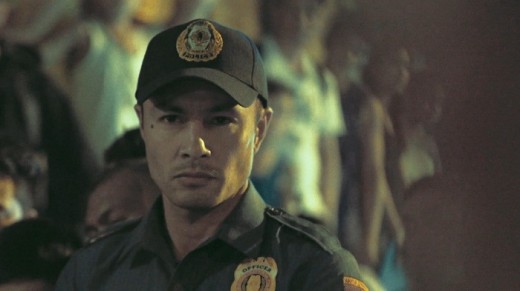THE DIALOGUE: Brillante Mendoza and The Essence of His “Found” Story
The late 2000s saw a brand new renaissance in the local film arena. Auteurs have risen left and right, reigniting a spark that was once lost during the halfway of the 1990s.
One of those auteurs is Brillante Mendoza.
Garnering fame back in 2005 with Masahista, his boldness and agility in taking risks as a storyteller have captured the hearts of cinephiles, cementing his name not just locally, but in various festivals abroad. His flame has never ceased blazing since then, and with his latest show Amo hitting Netflix this month, we definitely won’t see him stop anytime soon.
FlipGeeks had the opportunity to chat with Brillante Mendoza regarding Amo, its merits, and how he started as a filmmaker.
How did you conceive Amo? How were you able to come up with the idea for the series?
It was a pitch actually for TV5. I was commissioned by TV5 to pitch a project for them, and I’ve ,given thought about this when I just finished Ma Rosa that time, and Ma Rosa was all about illegal drugs diba? I have a lot of research material, and I might as well use this research kasi ang dami eh na pwedeng pang-pelikula, so sabi ko, might as well use them, so we crafted a story based on the research that we have when we were doing Ma Rosa.
It’s your first time developing a series, right?
Yes, first time. First TV show ko to.
What are the advantages of helming a TV series, in contrast to making films?
Actually when we were doing the series, since it was my first time, di kami nag-iisip na this is a TV show, kasi ang aking concept is still a film. We treated it like a full length feature, or an extended version of a film. You know how a series works. Kailangan mataas ung kalidad whenever you’re ending an episode. Kailangan may ganung requirements. Di ko inisip yung ganun. That was the challenge, and that’s something new sa television, sa akin, kasi di ako nappressure na kailangan mag-create ng scene sa isang episode just for the sake of sustaining ung interest ng audience, ’cause that’s how you work sa series, kailangan ma-suspend ung story so that they’ll watch the next episode. Ako, di ako nappressure sa ganung idea.
How does Amo differ from other projects that discuss drugs and crime?
Siguro, ang kaibahan nya is that in every episode ay may need na masustain ung interest with the show. This is also something new, since it’s not just about one person. It’s about different characters, pero inter-related sila within the series, and “found” story pa rin sya & pasok in my kind of storytelling. Co-located sila, magkakamag-anak sila. For instance, ung lead, tito nya ung pulis, and may bayaw sya na drug dealer.
When you see the whole series, parang di ka umaalis sa kwento. Alam mo na logical na mangyari sya, since magkakamag-anak sila. The focus shifts from this character to another, but in seamless fashion.
How did the casting process for Amo go?
The good thing with this project is that TV5 gave me the reins in terms of creative process, including the casting. Ayoko ng commercial actors, since nafofocus sa artista ung atensyon, sa halip na sa kwento. Mas maganda na ung content ung tingnan, more than the actors. I like the idea of liking a series because of its story. Mga independent actors ung nasa cast, and si Derek Ramsay lang talaga ung kilalang kilala out of them.
Do you believe that Netflix is a good avenue for budding filmmakers?
Depende sa intent ng filmmaker. Alam naman natin na Netflix shows are being watched all over the world. Since nakapag-establish na ako ng following sa festival circuits abroad, and alam na naman nila ung kind of films na gusto ko, magandang platform ung Netflix para sakin since lalawak pa ung reach ng films ko. With this, people will have an idea of my aesthetic as a filmmaker, my storytelling, saka makikita nila ung kwento na gusto ko sabihin through the series.
Would there be a difference between the TV and the Netflix version?
Yes, since there will be parts na need icensor sa show na di pwede ipakita sa free TV. I think it applies naman sa lahat ng series sa Pilipinas.
How were you able to seep the theme into your characters?
I try to show two different sides of the coin. It’s not just about what I know about corruption, but it’s also about the families being affected by illegal drugs. It affects not just families, but also society as a whole. Yun yung pinapakita ko. You show them the truth, but we do not judge and preach. Ganun lang ung parameters namin.
How did you realize that your calling is to become a director?
Before Masahista, I never thought I’ll become a filmmaker. Para kasing masyadong malaki ung dream na yun. Parang wala akong connection sa industry. Mahirap ang maging filmmaker. Thanks to advancements in technology, though, nagkaroon ng chance na makagawa ng film ang maraming filmmakers, including me. Otherwise, ang mahal gumawa ng pelikula. Etong digital technology eh nakatulong in democratizing filmmaking. Producers can also take risks sa akin since di naman need mag-invest ng malaki just to create a film. Nag-pay off ung risk nila, since nanalo ung Masahista.
I just tried it out, but it just so happened na maganda ung feedback, umikot sa mundo. There’s also the realization na ganito pala ang reaksyon ng tao pag napapanood nila ung pelikula mo, lalo na ung mga taga-ibang bansa. Di ko ineexpect ung possibilities and ung mga nangyari sakin when my films were shown abroad.
Who are you influences in terms of your directing style?
Ang influence ko actually eh hindi mga directors. Mayroon akong kaibigan who eventually became my mentor, si Armando Lao. Sya ung talagang nag-aral, and pinag-aralan talaga nya ung concept ng “found story.” It didn’t happen overnight. When I was starting with Masahista, dinedevelop na nya ung school of thought ng found story. Ung mga principles nun eh unti-unti kong inaapply sa lahat ng films ko. Yan yung major influence ko, which eventually became my aesthetic.
How do you feel now that filmmakers are emulating your directing style?
I feel honored na sinusundan ng iba ung style ng found story, to the point where I become a role model to them. I guess it’s partly because akma ung ganung aesthetic sa ating mga Pilipino. Di mahal, kasi suited sya for us, lalo na sa indie filmmakers.
What’s next for Brillante Mendoza?
Actually, right now nag-eedit ako ng film na kakatapos ko lang. Ang tentative title ng isa is Bayang Magiliw, yung isa naman is The Right to Kill. They’re two different genres, and natapos ko sila this year. Nasa editing process na ako for both of them. Hopefully, within 2018, we’ll get to finish those two.
Amo is now streaming on Netflix. Subscribe now, and get a 30-day trial on all of their content.































